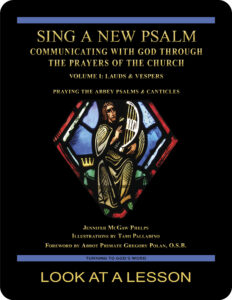thanksgiving
 As we celebrate the holiday of Thanksgiving in the United States, it seems fitting to take a look at the topic of giving thanks as it’s treated in the Scriptures. For those of us who are Catholic, this topic is of special importance because it lends its name to the sacrament that holds a central place in our worship, the Eucharist. The Greek word for giving thanks is εὐχαριστέω (eucharisteo). This verb in its various forms is used 39 times in the Greek New Testament. In every instance, eucharisteo refers specifically to giving thanks to God. In any Christian context, we can assume that Eucharist specifically is thanksgiving to God.
As we celebrate the holiday of Thanksgiving in the United States, it seems fitting to take a look at the topic of giving thanks as it’s treated in the Scriptures. For those of us who are Catholic, this topic is of special importance because it lends its name to the sacrament that holds a central place in our worship, the Eucharist. The Greek word for giving thanks is εὐχαριστέω (eucharisteo). This verb in its various forms is used 39 times in the Greek New Testament. In every instance, eucharisteo refers specifically to giving thanks to God. In any Christian context, we can assume that Eucharist specifically is thanksgiving to God.
Of the 39 mentions of eucharisteo in the New Testament, 12 are specific instances of Jesus giving thanks over a meal. Our sacrament takes the name Eucharist because Jesus gave heartfelt thanks over every shared meal with his followers. The early Christians viewed this thanksgiving as the most important part of their communal meal and celebration.
Although not all of us always are able to join our loved ones for a shared on the Thanksgiving holiday, it’s more fitting than ever that we reflect and give thanks to God for the many blessings we have received. It’s equally fitting that we be mindful when we go to Mass that the sacrament of the Eucharist is a sacrament about giving thanks to God. What’s the most important thing that God has done for which you would like to offer thanks?
related topics: bread of life; I AM; transfiguration & transubstantiation
you also may like Volume I of our Psalms study
 Sing a New Psalm: Communicating with God Through the Prayers of the Church—Volume I: Lauds & Vespers provides an in-depth look at Psalms prayed in morning and evening liturgies. (Volume II, set for publication in 2024, looks at Vigils, Day Prayer & Compline.) The study is based on The Abbey Psalms and Canticles, a translation prepared by the Benedictine monks of Conception Abbey and published by the United States Conference of Catholic Bishops (USCCB). Click on the book’s cover to view a sample lesson.
Sing a New Psalm: Communicating with God Through the Prayers of the Church—Volume I: Lauds & Vespers provides an in-depth look at Psalms prayed in morning and evening liturgies. (Volume II, set for publication in 2024, looks at Vigils, Day Prayer & Compline.) The study is based on The Abbey Psalms and Canticles, a translation prepared by the Benedictine monks of Conception Abbey and published by the United States Conference of Catholic Bishops (USCCB). Click on the book’s cover to view a sample lesson.
 Click on the picture of the statue of Moses with horns (above) to learn more about Lost in Translation. A new entry is archived each Monday. Contact us to receive Lost in Translation by email every week. You may use any of the contact links on our website to ask Matthew a question.
Click on the picture of the statue of Moses with horns (above) to learn more about Lost in Translation. A new entry is archived each Monday. Contact us to receive Lost in Translation by email every week. You may use any of the contact links on our website to ask Matthew a question.
